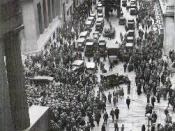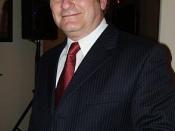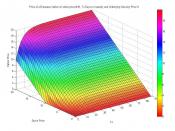Random House, September 2000, 264 pages
The classic image of a Wall Street market trader is someone, usually a man, on the trading floor, shouting buy and sell orders, clutching a sheaf of trading tickets. Floor traders must have an instinctive feel for trading and get by on their quick wits. They are now a vanishing species and will soon join Mark Twain's riverboat captains in extinction and myth.
Modern trading is now almost entirely paperless and takes place in the cyberspace of computers and computer networks. The instincts of market traders are being augmented and in some cases replaced by mathematical pricing models. Traders are being drawn from schools like MIT, rather than the City College of New York. A feeling for market dynamics and trends will always be important, but along side these skills modern traders have a command of statistics and probability theory.
John Meriwether gained a measure of fame in Michael Lewis' book Liar's Poker, where he is described by Lewis as a Salomon Brothers Uber-trader and master of Liar's Poker.
Meriwether was one of the top bond traders at Salomon Brothers and later became head of the fixed income securities department (which was responsible for mortgage security and bond trading). Meriwether was one of the first people on Wall Street to recruit mathematicians and physicists from schools like MIT and Cal. Tech and turn them into bond traders. Meriwether was a harbinger of the conjunction between Wall Street and the Ivory Tower.
Perhaps to the horror of the old Wall Street operators, academic financial theory provided a framework that allowed markets to function more effectively. One example of this is the Black-Scholes model for pricing stock options. Acceptance of the Black-Scholes model has become so wide spread that Web sites like Yahoo and E*trade that...


